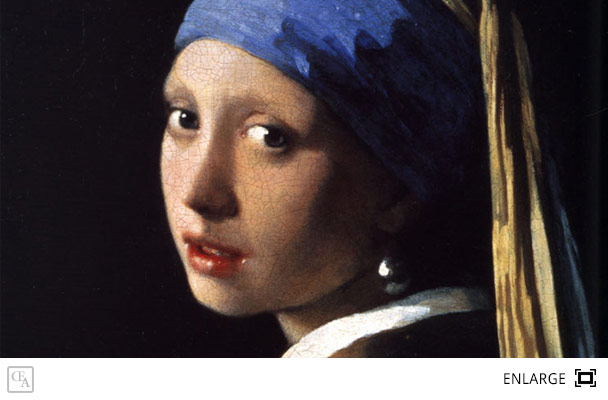
The work did not start out with this title, however, and only acquired it in the late 20th century; originally, the title was Girl with a Turban. This painting is considered a classic of Western art and is sometimes called the Mona Lisa of Northern Europe.
Most likely, the subject of the painting is the oldest of Vermeer's daughters, who would have been in her early teens when it was created; she may have appeared in several of his works, in fact, though it is difficult to know for sure due to Vermeer's style and diverse lighting techniques which can make a single person's features appear differently in different works.
Vermeer created dozens of paintings that depicted women, and it seemed that he was fascinated with portraying the everyday domestic roles of the women that surrounded him. He seemed to admire the woman's “purpose” as a homemaker who worked to keep the home from devolving into chaos, tirelessly helping to raise the next generation according to Biblical principles.
In this painting, one gets the distinct impression that the subject has been interrupted, that the viewer has called to her and that she's turned her head to face him. There is something enigmatic about her look, about the attentiveness of her eyes that look on at the viewer with something akin to expectation. A light source from far away strikes the side of her face and the bright white pearl at her ear, which may have some sort of religious significance, and may be a symbol of the young woman's chastity. A similar earring (or perhaps even the same one, since Vermeer had a tendency to use the same props and locations in multiple works) appears in Vermeer's other painting A Woman Brought A Letter By A Maid. The girl's turban, wrapped tightly around her head, is a deep blue color, its wrinkles and ridges oddly organized and geometric, an element common in Vermeer's depictions of fabric. Her mouth is slightly open.
Though the background of the painting is currently black, it most likely was originally a dark greenish color, but the original pigments have deteriorated with age, resulting in the gradual change to black.
Not a lot is known about either Vermeer or his work, and in fact, this particular painting is not even dated. It is not clear whether the painting was meant to be a portrait or if it was commissioned by any specific person.
Vermeer's techniques, in general, are also shrouded in mystery and subject to speculation. Because of Vermeer's unusually masterful use of light and shadow, many suspect that he may have used a camera obscura to achieve these effects, and may have painted over a projected image of the scenes that he arranged. In fact, this speculation is investigated further in the film Tim's Vermeer, a documentary that follows Tim Jenison as he attempts to recreate the circumstances of Vermeer's masterpieces by constructing his own camera obscucra-like device and painting tributes to the artist's greatest works.
 Van Gogh: Complete Works
Van Gogh: Complete Works